Basic Information
Observation Details
Observation Date:
December 16, 2020 - December 16, 2020Submitted:
December 16, 2020Observer:
TAC - Steve GatelyZone or Region:
Taos AreaLocation:
Sin Nombre Cirque to Wheeler Peak Near TreelineSigns of Unstable Snow
Recent Avalanches?
None ObservedCracking?
WidespreadCollapsing?
WidespreadSnow Stability
Stability Rating:
FairConfidence in Rating:
ModerateStability Trend:
ImprovingBottom Line
It's not difficult to find signs of unstable snow. We experienced several collapses with shooting cracks on test slopes. However, all of these slopes arrested. So what does that mean? We're living in a transition period. Our snowpack is adjusting to the new load but it's still possible to trigger a Persistent Slab avalanche. These avalanches have the potential to be large enough to bury or kill a skier or rider. North through East aspects near and above tree line are the most suspect.
Media
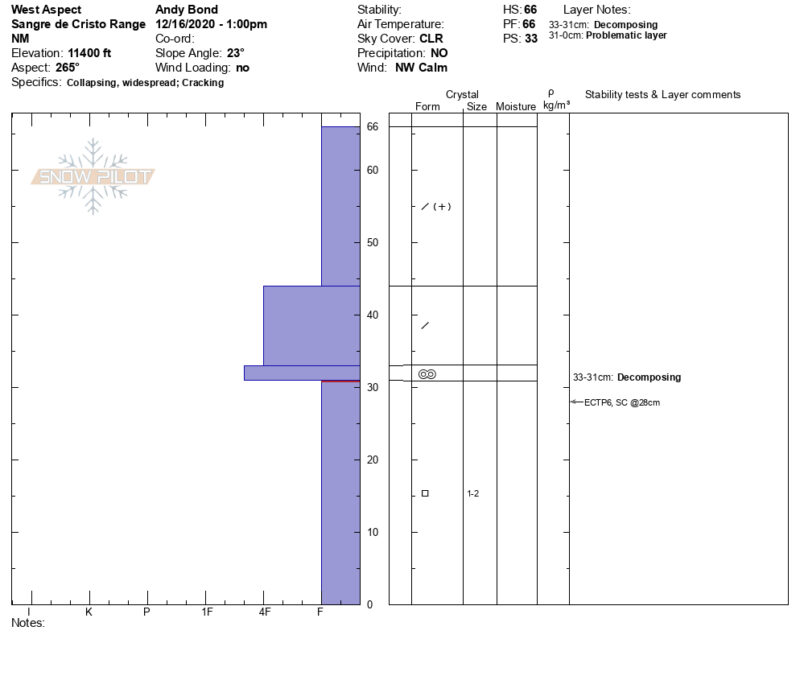
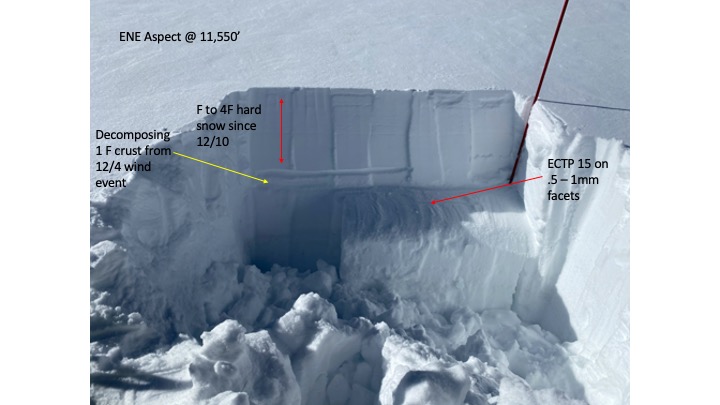
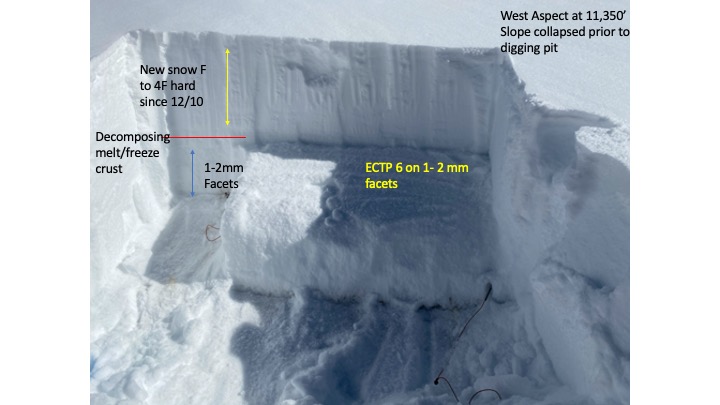
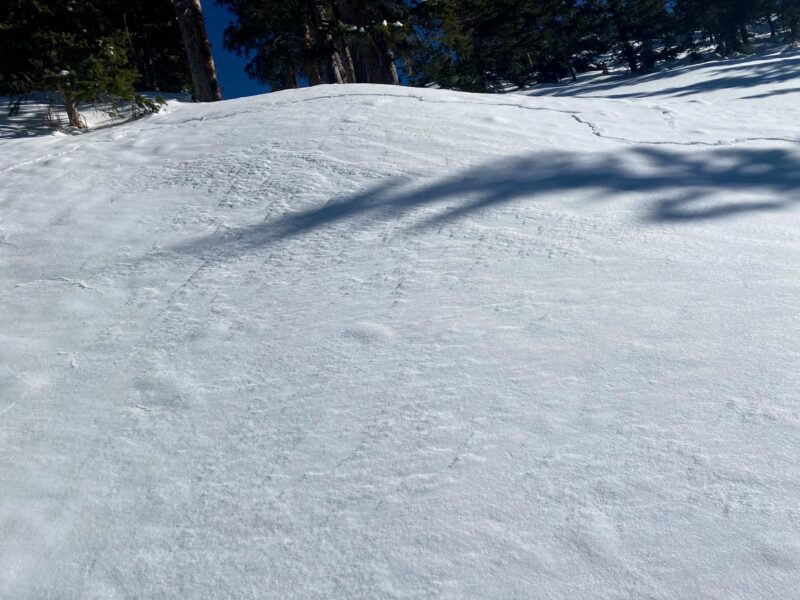
Advanced Information
Weather Summary
Cloud Cover:
ClearTemperature:
22Wind:
Light , NA beautiful sunny day up there today. It was warm in the sun and we observed some solar effect on West and South facing aspects especially below tree line. Near tree line and above probably need one more day to form a noticeable melt freeze crust. Temperatures were noticeably warmer which is in line with the forecast. We didn't notice wind transporting snow off ridgelines today.
Snowpack Observations
Areas that have seen some wind have a more cohesive slab that is still susceptible to collapsing at the moment. Our deeper snowpack on North through East aspects are collapsing on a layer of Near Surface Facets just below a wind crust that marks the interface between older snow and our most recent storm snow. West facing aspects have an overall shallower snowpack that is collapsing on Basal Facets or Depth Hoar. South aspects were not observed today.
The sun is helping to reduce the strength of our slabs on solar aspects. Wind sheltered areas near and below tree line are losing strength through faceting. North through East aspects continue to be the most suspect, especially in areas with signs of wind distribution.
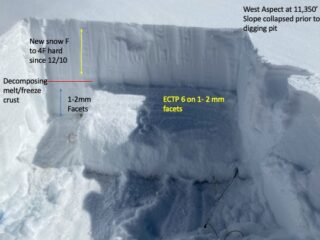
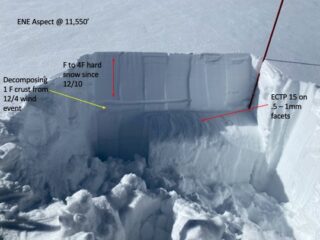
Avalanche Problems
| Problem | Location | Distribution | Sensitivity | Size | Comments |
|---|---|---|---|---|---|
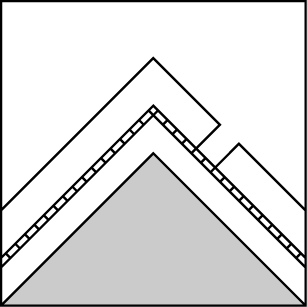 Persistent Slab
Persistent Slab
|
|
Layer Depth/Date: 12/16/2020 |
It's not hard to find signs of instability but it is however becoming stubborn to get these slopes to avalanche. All test slopes collapsed and arrested.
Terrain Use
We generally stuck to terrain below 35 degrees. We sought out isolated areas of avalanche terrain as test slopes.
Close